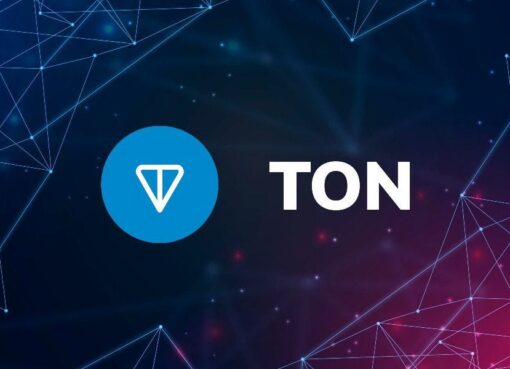Accusations of wash trading from the Blockchain Transparency Institute (BTI) have prompted OKEx’s CEO to challenge BTI to a wager, which has opened up an entirely new can of worms.
Wash trading, a form of market manipulation, is often used to create artificial marketplace activity to draw in more investors. Last week, a report from BTI alleged that 90% of OKEx exchange’s volume was falsified via wash trading. Today, OKEx CEO Jay Hao invited researchers to partake in a bet. Hao staked 100 BTC (roughly $945,500) that he could prove at least 10% of OKEx trade volume was real.
Hao’s summons didn’t go unanswered, but neither an apology nor an acceptance of the bet was granted. Instead, BTI remarked that in order to prove either side of the claim, they would need “3rd party wash trade surveillance software hooked into OKEx.”
Several hours later, a further Tweet from Hao noted that BTI had updated its website, decreasing OKEx’s supposedly fake volume from 90% to 73.22%.
However, as of the time of writing the website has recalculated to display OKEx as 90% wash traded once again.
BTI’s Side
In response to a question pertaining to their methodology to verify volume, BTI told CCN that releasing the strategy would jeopardize the process:
“We have algorithms that we have tested over the past year across all exchanges from small to large. Our data scientists developed our methodology from patterns seen across these tests. We find ourselves in a difficult situation because giving our exact formula to the public will give those faking volume a roadmap on how to beat our system and defeat the purpose of our mission.”
When asked why OKEx’s alleged wash trading figure was changed from 90% to 72.3%, BTI noted:
“The figure ranges from day to day, however for the main exchange table we use a 90-day average.”
BTI added that they would be sending over data reports to the OKEx team “so they can see more of what we are seeing on our end.”
OXEx’s Side of the Story
Also speaking to CCN, Andy Cheung, Head of Operations at OKEx, irrevocably denied wash trading, saying:
” “OKEx is not involved in and does not tolerate any wash trading activities…BTI’s report is [inaccurate] and misleading. Their methodology is highly questionable and not transparent. We urge BTI to disclose the full report for all exchanges.”
While Cheung accepted that BTI had “good” intentions to “promote the growth of the blockchain industry,” he caveated that OKEx was “not convinced by and not comfortable with the request of installing a 3rd party software for their surveillance,” adding that they didn’t have a “clear understanding of BTI” and that it was “not transparent.”
Cheung stressed the importance of their customer privacy, stating:
“Our customers trusted us with their private information, and we believe it is not the best practice for us to risk it for our reputation.”
Cheung concluded by condemning wash trading:
“[The] wash trading problem is an industry challenge that every stakeholder [is] facing. We do NOT encourage and do NOT tolerate it.”
OKEx’s Alleged History of Wash Trading
BTI pointed CCN to various other reports of OKEx’s alleged wash traded volume. One such investigation from crypto analyst Sylvain Ribes yielded nearly exactly the same result as BTI’s study, with Ribes writing in a Medium post:
“I believe more than $3 billion of all cryptoassets’ volume to be fabricated, and how OKex, #1 exchange rated by volume, is the main offender with up to 93% of its volume being nonexistent.”
Within the post, which dates back to March 2018, Ribes measured multiple exchange reactions to a sell order of $50,000 worth of cryptocurrency to ascertain a base result.
“Many pairs, albeit boasting up to $5 million volumes, would cost you more than 10% in slippage, should you want to liquidate a mere $50k in assets.”
The analyst found that while Kraken, Bitfinex, and GDAX all reported relatively similar results, OKEx pairs differed fairly dramatically, reporting a much higher slippage in regard to their volume.
Repeated Offense
Another investigation was undertaken by trading analytics firm TIE back in March 2019. The report relayed that out of 97 exchanges examined, 87% of the reported trading volume was “potentially suspicious.”
“If each exchange averaged the volume per visit of CoinbasePro, Gemini, Poloniex, Binance, and Kraken, we would expect the real trading volume among the largest 100 exchanges to equal $2.1 [billion] per day. Currently, that number is being reported as $15.9 [billion].”
OKEx was also cited among the exchanges with reportedly “suspicious” trading activity:
Of course, it wouldn’t be fair to suggest that OKEx is the only exchange involved in alleged wash trading. In fact, it seems to be a pandemic in the cryptocurrency industry. This latest BTI report is the fifth since 2018 that highlights suspicions with exchange reported volume. While BTI notes there’s been a 35.7% reduction across the top 40 exchanges, the issue is far from settled. Unfortunately, it seems that the largely unregulated nature of crypto exchanges still makes it too easy to mislead.
Last modified (UTC): September 24, 2019 8:56 PM
September 24, 2019 9:00 PM




